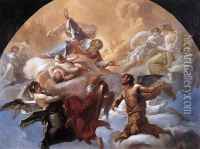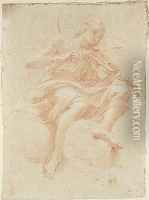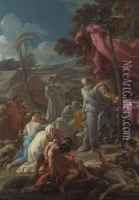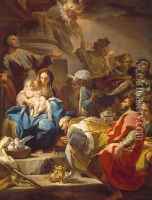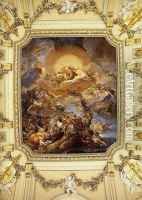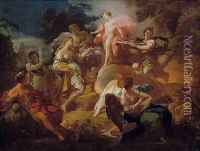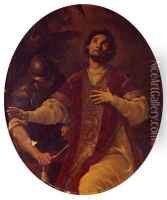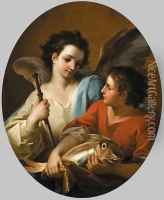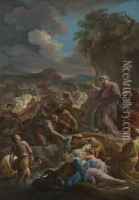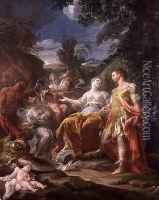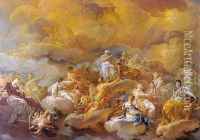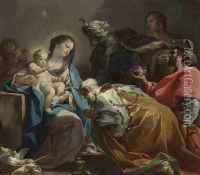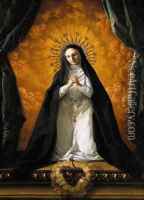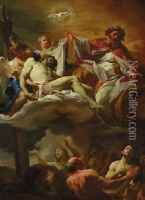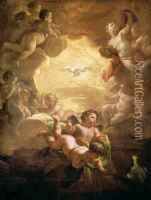Corrado Giaquinto Paintings
Corrado Giaquinto was a prominent Italian Rococo painter born in 1703 in Molfetta, a city in the Apulia region of Italy. He is known for his vibrant and expressive style, characterized by its dynamic compositions, rich color palette, and dramatic use of light and shadow. Giaquinto's early training began in Naples, where he was a pupil of Nicola Maria Rossi, a lesser-known painter of the time. However, it was his move to Rome in 1723 that marked the beginning of his significant artistic development. In Rome, he was influenced by the works of leading artists of the time, including Sebastiano Conca and Francesco Solimena, and he quickly assimilated the Baroque and early Rococo styles that were prevalent in the city.
Giaquinto's talent and skill as a painter soon led to commissions from various religious and noble patrons. His work encompassed a wide range of subjects, including religious themes, allegorical scenes, and mythological subjects, which he executed with a remarkable ability to convey emotion and movement. In 1753, his career took a significant turn when he was appointed as the court painter to King Ferdinand VI of Spain. This position took him to Madrid, where he played a crucial role in the development of the Spanish Rococo style. During his time in Spain, Giaquinto was involved in several major projects, including the decoration of the Royal Palace of Madrid and the creation of numerous religious and allegorical paintings for churches and palaces.
Despite his success in Spain, Giaquinto returned to Italy in 1762, where he continued to work until his death in 1766. Throughout his career, Giaquinto was celebrated for his ability to blend the dramatic intensity of the Baroque with the lightness and elegance of the Rococo. His works are characterized by their vibrant colors, fluid brushwork, and the sensuous appeal of their figures, which have made him one of the leading figures of the Italian Rococo movement. Today, Giaquinto's paintings can be found in many major museums and collections around the world, where they continue to be admired for their beauty and expressive power.
